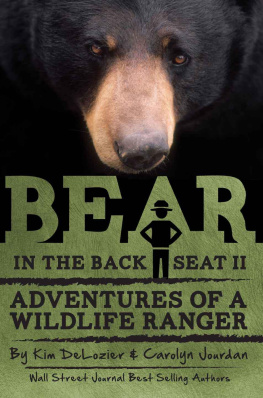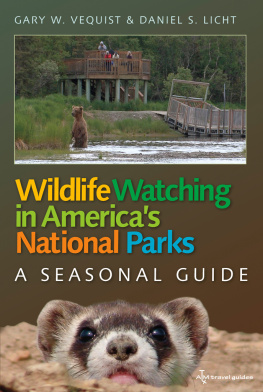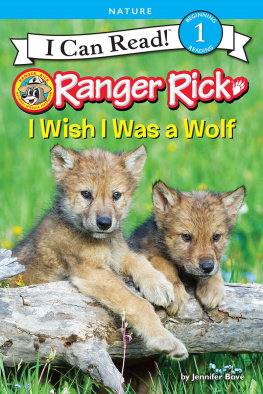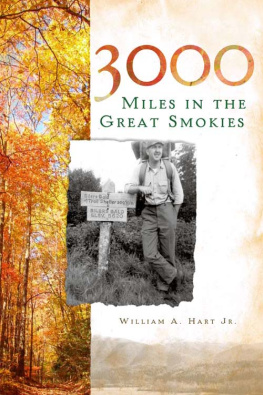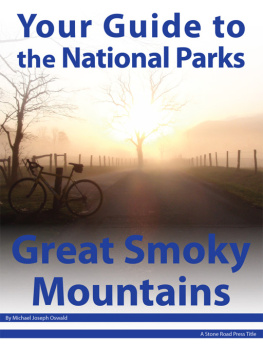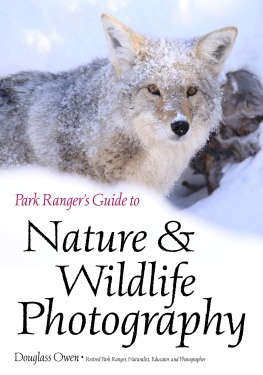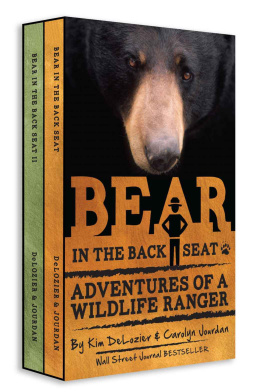Table of Contents
Bear in the Back Seat II
Adventures of a Wildlife Ranger
in the Great Smoky Mountains National Park
by
Kim DeLozier &
Carolyn Jourdan
2014 Kim DeLozier and Carolyn Jourdan
All rights reserved. No part of this publication may be reproduced, stored in a retrieval system, or transmitted by any meanselectronic, mechanical, photographic (photocopying), recording, or otherwisewithout prior permission in writing from the author.
Printed in the United States of America
ISBN-13: 978-0-9885643-5-0 eBook
Designed by Karen Key
Cover photo by Bill Lea
www.BillLea.com
In this book Smoky Mountain dialect is rendered as it is actually spoken. Appalachian speech is poetic and musical. It is sung as much as spoken, so a great part of the meaning is conveyed in the cadences and tones.
It is used in conversation by people of all levels of education and intelligence, so no apostrophes will highlight the dropped gs or word variants, as if they are errors. For the same reason, the local grammar is retained.
This was done to enable the reader to experience Smoky Mountain life and language intimately, as an insider would.

Wildlife Rangers in the Great Smoky Mountains National Park have developed their own special nomenclature for referring to Park vehicles. These animal nicknames, attributed to Ranger Rick Varner, are based on the size and power of the various trucks.
The Boar : Half-ton 4x4 Dodge pickup with an 8-cylinder engine. It has a winch mounted in the bed to pull cages and traps into the back. This was the most powerful truck. Its the one used to pull the elk trailer or move bear traps that had to be transported in the bed of a truck.
The Sow : Half-ton 4x4 Chevrolet extended cab pickup with a 6-cylinder engine. It has an 8 bed which made the truck difficult to maneuver in tight places. It was good for hauling people when conducting deer counts in Cades Cove. It was big, but not very tough.
The Shoat : Half-ton 4x4 Dodge pickup with a 6-cylinder engine. A medium-strength vehicle used for tasks like towing bear trap trailers or for checking hog traps.
The Piglet : Ford Ranger 4x4 pickup with a small engine. A light-duty vehicle used mainly for checking hog traps and for general transportation.
The Elk Calf : Chevrolet S-10 4x4 pickup with a small engine. A light-duty vehicle used mainly to track and locate elk and for general transportation.
Kims Truck : Ford Explorer 4x4 SUV with a 6-cylinder engine. It was used for general transportation and elk darting, and occasionally to pull larger trailers for boats. Although this vehicle was sometimes jokingly referred to as the grocery gitter , it was Kims favorite. It earned respect when used to rescue researchers and wildlife handlers after a sudden blizzard in Cataloochee, North Carolina when other vehicles got stuck in the deep snow.
Bear in the Back Seat (Again)
THE GREAT SMOKY MOUNTAINS National Park was established in 1934 and soon became famous for its black bears. Unfortunately, back then, and for several decades afterwards, nobody knew how to professionally manage live black bears in the wild. In most cases, the rangers had to learn how to deal with the animals by trial and error.
Black bears arent generally as aggressive as grizzly bears or polar bears, but theyre unbelievably strong and smart. Some studies indicate that theyre more intelligent than dogs.
Was I smarter than the average bear? Not at first. For years I was on a steep learning curve in dealing with them. And the Park visitors who encounter these crafty black bruins never stand a chance in outwitting them.
During the early years, many bears that caused problems for Park visitors were simply shot. Rangers dont like to have to do this. Black bears are the icons of the Smokies and part of our job is to protect them. We enjoy them as much as tourists do. So, instead of simply killing them, we decided to experiment with moving nuisance bears away from the populated areas.
This worked very well. We learned that if we took the bears deeper into the woods, they were usually able to live out their lives in the wild without causing any further problems. Some years we moved dozens of bears. Then gradually we realized that it wasnt really the bears fault. We were teaching them bad habits.
The origin of the problem was that Park visitors were leaving enormous amounts of food scraps out where the bears could get to them. Its very easy for the bears to find garbage because they have what many scientists believe is the most sensitive nose in the world .
Their sense of smell is seven times better than a bloodhounds and 2,100 times better than a humans. They can smell food from a great distance. With so many visitors grilling and frying hamburgers, hotdogs, and chicken throughout the Park, bears dont need a GPS to find an easy and tasty meal.
So, in the days before we focused on providing bear-proof trashcans to lock up the food the scraps, I handled wild black bears frequently. One of my most memorable lessons came when I got a report of a bear being active in the Chimneys picnic area.
In those first years I was very excited to respond to a bear call, especially if I was going to need to dart it with tranquilizing drugs. Id grab the dart pistol and take off up the road. I thought I had to respond like I was David Hasselhoff on Baywatch , running to save a drowning person, but I had it all wrong.
I believed that time was of the essence in these situations, and in some cases it was. But, over the years I came to realize that a bear might leave before I arrived, but if he did, it was no big deal. If he was a real problem, hed keep coming back. What I actually needed to do when I got a call was to stop, take a deep breath, and make a plan. Unfortunately I rarely did that.
On this particular day, as soon as I got the call, I took off in a little CJ5 Jeep instead of a truck and I didnt bother to take the time to load up an animal transfer cage. That was two bad mistakes right at the outset.
After a humbling and humiliating incident, Id learned to be careful with the dart gun, but I was still green and didnt always take the time to get the right vehicle or bring the right equipment with me.
It was a hot summer afternoon and the smell of barbequed chicken, hamburgers, and hotdogs filled the picnic area. The delicious smells were more than the poor bear could resist. He wanted the food more than he feared the irate families. He wasnt listening to what his momma had taught him when he was a cub.
I was lucky and I got there while the bear was still in the area. I was able to move the people back and work my way around the restrooms and picnic tables to position myself in a good location to take a shot. The bear wandered to within ten yards of me. I carefully aimed the gun toward the bears rear quarter and pulled the trigger. The dart hit the mark and soon the bear was sleeping soundly.
Since there were so many spectators at this popular picnic spot, I took the opportunity to give a short educational talk to explain what I was doing and why. This was a memorable experience for the visitors and a great opportunity to teach them how to behave in bear country.
I shouldve called back to the Wildlife Building and asked someone to bring a transfer cage while I gave my little talk, but I didnt. That was the third mistake. Id darted enough bears by this time to get overly confident. That was my fourth mistake.
When I was ready to take the animal on the five mile drive to the Wildlife Building, I knelt down beside the sleeping bear, slapped my hands, flicked one of its ears, and gently poked its ribs to check if it was fully immobilized. I got no reaction, so I figured the bear was still deeply under the effects of the drugs.

